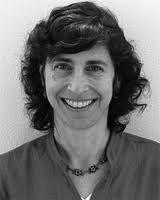 Purim celebrates the physical survival of the Jewish people. The storyline is simple: The evil minister, Haman, convinces a clueless and party-loving King Ahashverus to annihilate the Jewish people. Through the bravery of Queen Esther, Haman is thwarted and hung. The Jews not only are spared, but Haman is replaced by Mordecai as the King’s highest-ranking minister, putting a Jewish leader in a position of power going forward.
Purim celebrates the physical survival of the Jewish people. The storyline is simple: The evil minister, Haman, convinces a clueless and party-loving King Ahashverus to annihilate the Jewish people. Through the bravery of Queen Esther, Haman is thwarted and hung. The Jews not only are spared, but Haman is replaced by Mordecai as the King’s highest-ranking minister, putting a Jewish leader in a position of power going forward.
Often the great joy and celebration of our survival on this holiday is accompanied by extreme partying and drinking, not unlike the behavior of the king in the story. A friend, observing a Purim celebration, once commented to me, “Do you know why people drink to excess? To cover the pain.” As a child, Purim was a time of great fun. But I now see that the disproportionate Purim joy hides a deep pain.
Esther didn’t just win a “beauty contest.” She was forced to appear before a king who already banished and probably killed a previous queen who refused to “perform” in front him and a group of his drunken friends. Queen Vashti dared say no to a powerful man and paid the ultimate price.
Esther didn’t choose to become the queen. She was “chosen,” most likely against her will. For her safety, she needed to hide her identity as a Jew. According to some interpretations of this story, Esther was not the niece of Mordecai, but his wife, making the coercive pain of the story even more pronounced. Yes, the Jews survive, but at the cost of Esther’s ability to remain with her husband, Mordecai.
All is not well at the end of the story. Is it truly a sign of success to find a path to power within a culture of excess, a culture that degrades women, and most likely, others? The underlying culture isn’t changed by the events, so it’s only a matter of time before the next threat to survival appears.
In addition, we know there have been too many times in Jewish history when there was no Esther hidden in the halls of power to save us. Perhaps this story is just a farce to make ourselves feel powerful, at least this once.
And yet, there is something redemptive about the joy we are expected to display on Purim, despite the sadness, pain and fear masked beneath it. Rabbi Jason Rubenstein wrote about redemptive Purim joy in Every Day is Purim: Celebrating a Joy that Knows Fear. He suggests that on Purim we, “affirm that our joy isn’t predicated on a denial of this world’s brokenness, of life’s fragility.” He describes Purim joy as, “not a joy that knows no fear, but a joy that knows fear, and knows that there is something greater than that fear…”
A strength of Judaism is that it recognizes the complexity of human emotions. F. Scott Fitzgerald said, “The test of a first-rate intelligence is the ability to hold two opposed ideas in mind at the same time and still retain the ability to function.” Rabbi Abraham Joshua Heschel pointed at the same idea when he wrote that, “tension, contrast and contradiction characterize all of reality.”
With all the pain in the world, it is easy to succumb to despair. But, Purim is a day to remind us that though life holds underlying sadness and even terror, it is both possible and crucial to be joyous. We rejoice in the beauty of survival, heroism and devotion to others. It is a mitzvah to put love and joy into a world where hatred and sadness exist. Purim reminds us that “a joy that knows fear” is a joy worth nurturing, treasuring and celebrating.
 By Beth Huppin
By Beth Huppin
Beth is the Director of JFS Project Kavod/Dignity. She has enjoyed teaching Judaics to children and adults of all ages in both formal and informal settings for over 30 years. She is the recipient of a 2010 National Covenant Award for Excellence in Jewish Education.
This content was made possible, in part, by funds granted by The Covenant Foundation. The statements made and the views expressed, however, are solely the responsibility of the author.



